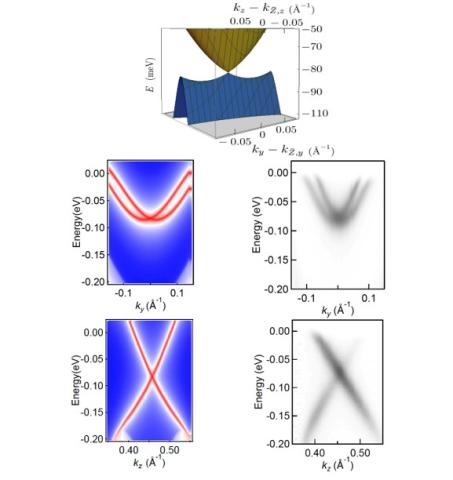Time reversal symmetric (TRS) invariant topological insulators (TIs) fulfill a paradigmatic role in the field of topological materials, standing at the origin of its development. Apart from TRS protected strong TIs, it was realized early on that more confounding weak topological insulators (WTI) exist. This class of materials remains mostly elusive as they exhibit topological surface states only in certain directions, which may not have natural cleaving planes. RhBi2 is the first observation of the simplest WTI state in a truly 3D triclinic crystal with clear topological surface states at the natural cleaving surface. This

material maximally profits from the optimal symmetry space group (inversion and translational) and allows WTI to exist in every stacking direction. DFT calculation and ARPES data revealed saddle points in band dispersion that give rise to a van Hove singularity (VHS). The proximity of the VHS to the Fermi level provides opportunities to explore intersection of topology and quantum many body instabilities that are often induced by the VHS. RhBi2 also a potential host for intriguing new physical phenomena and new topological phase transitions when stress or strain are applied.
Kyungchan Lee, Gunnar F. Lange, Lin-Lin Wang, Brinda Kuthanazhi, Thaís V. Trevisan, Na Hyun Jo, Benjamin Schrunk, Peter P. Orth, Robert-Jan Slager, Paul C. Canfield & Adam Kaminski), Discovery of a weak topological insulating state and van Hove singularity in triclinic RhBi2, NATURE COMMUNICATIONS 12:1855 (2021), https://doi.org/10.1038/s41467-021-22136-w |www.nature.com/naturecommunications
